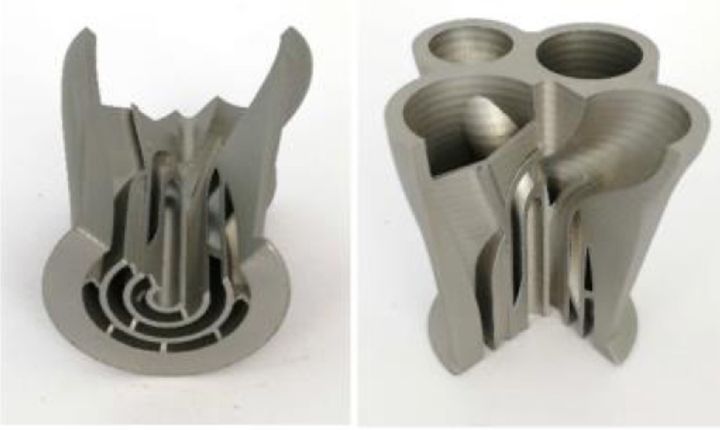
Researchers have developed what appears to be a far more accessible method of developing highly complex 3D models for 3D printing.
3D Design Paradigms
Today we use a multitude of different software tools to develop our 3D models, and there are only a few ways for this to be done:
- 2D Assembly: Flat, 2D shapes are drawn and then extruded or assembled into (hopefully) 3D models (Example: SketchUp)
- Primitive Modification: Basic shapes like cubes, cylinders, spheres and others are then combined, pushed and pulled into the desired geometry (Example: ZBrush)
- Generative: An algorithm computes the locations of points in 3D space, which are then joined together to form a complex geometry (Example: Grasshopper)
- Programmatic: Software code is written that when executed will generate the desired geometry (Example: OpenSCAD)
Sometimes these paradigms are combined together. For example, many high-level engineering CAD tools will offer a comprehensive 2D sketching function to build new kinds of primitives, which are then combined to make more complete objects.
One notable example of paradigm collision is Autodesk Fusion 360, whose name indicates the strategy to “fuse” different design paradigms together. The tool offers 2D sketching, primitive operations and generative options.
These paradigms have been used to power the creation of countless 3D models for decades. But there’s a problem.
They are difficult to use for most people unless only the simplest 3D models are attempted. For creation of highly complex 3D models that best leverage advanced 3D printing technologies, it’s essentially inaccessible to most.
That could be one of the unseen barriers to widespread adoption of 3D printing processes.
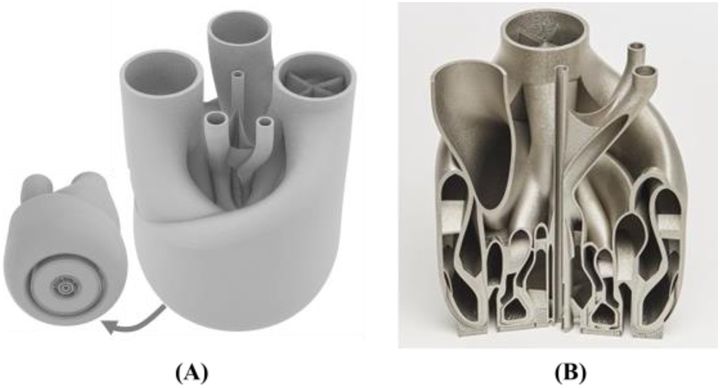
How difficult is this process? One example the researchers published was this monstrously complex nozzle designed from Siemens, which apparently includes over 2500 features and took six months of detailed design work.
Computational Design Synthesis
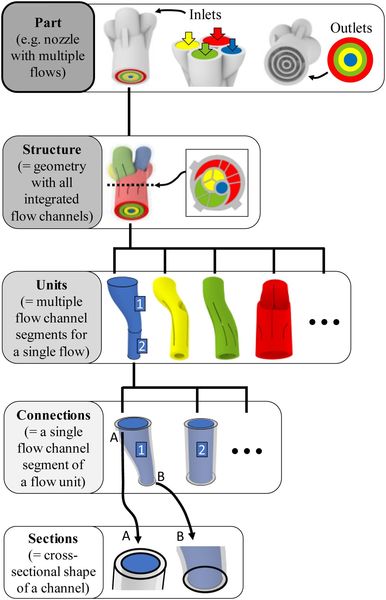
The researchers, from ETH Zurich, found a way to develop complex geometries in a much more simple manner by leveraging AI techniques. They developed a method by which a designer could very quickly create “organic-shaped” multi-flow nozzles.
The framework involves identifying key elements in the design from an experienced knowledge base. Then these are provided to the designer as a kind of “toolbox”. The designer selects a combination of elements to more-or-less represent the end-design goal.
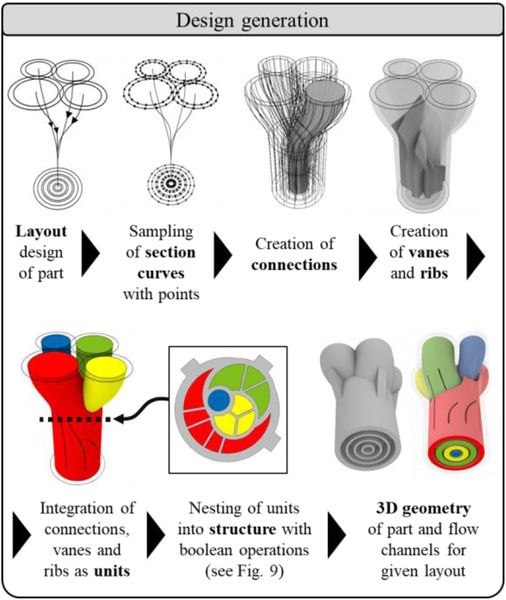
However, this is not simply an assembly system; the next step involves triggering the AI system to take those components as input and apply synthesis algorithms to convert the “rough draft” of the user input into a fully-fledged DfAM design, suitable for 3D printing.
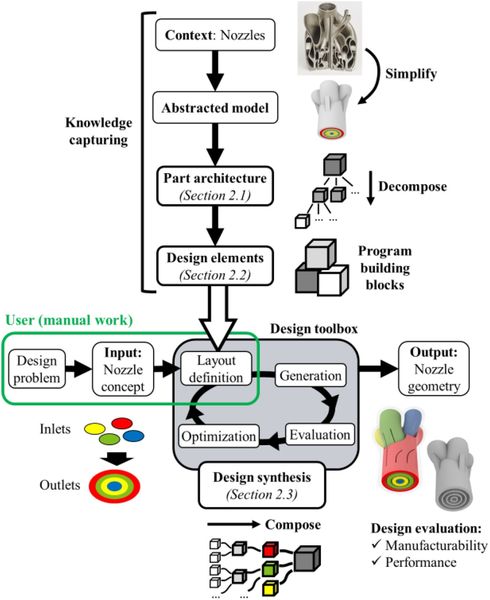
The researchers explain:
“The main idea is to provide users a software-based design toolbox with a set of design elements, which function as high-level building blocks. Given the concept of a nozzle including inlets and outlets, a user specifies the layout design of a part meaning the arrangement of design elements. The layout serves as an input for the toolbox that automatically translates it into the corresponding 3D nozzle geometry. To analyze manufacturing restrictions of AM the toolbox provides functions to check wall thickness values and critical overhang angles. These allow detecting and excluding non-manufacturable AM designs. Furthermore, a nozzle can be evaluated for its performance using computational fluid dynamics (CFD) analysis.”

This is a notable development, as it enables less-than-elite 3D designers to actually attempt the design of nozzles as complex as the one above, and obtain the results in far less time.
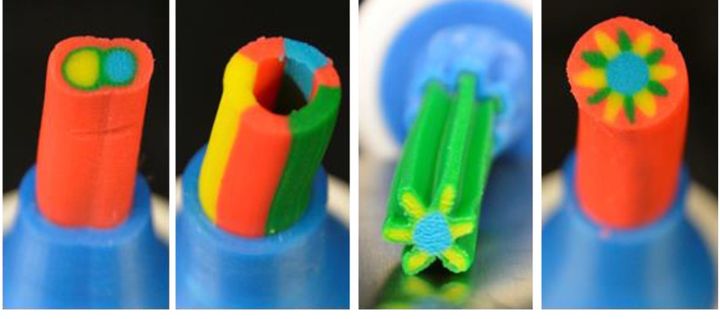
Consider the cost of six months of an elite 3D designer (or even design TEAM) and you’ll realize how important this might be. The price of design work could be the single most expensive part of building a complex part. Now, that cost might drop considerably.
Lower design costs might lure companies into experimenting more freely with such complex products, and this could in turn lead to additional levels of 3D printing in industry.
While the technique developed by the researchers is customized for nozzle design, it would appear similar customizations could eventually be made for other types of objects. This would open up the possibility for vastly greater levels of designers creating “impossible objects” for 3D printing.
Via Science Direct (Hat tip to Benjamin)
